Key Takeaways
1. Mathematics reveals hidden truths about our world and ourselves
Mathematics seems to have astonishing power to tell us how things work, why things are the way they are, and what the universe would tell us if we could only learn to listen.
Mathematics as a universal language. Mathematics is not just about numbers and equations; it's a powerful tool for understanding the world around us and ourselves. It provides a framework for analyzing complex systems, from the motion of planets to human behavior. By using mathematical models, we can uncover hidden patterns and relationships that are not immediately apparent.
Real-world applications. Mathematics has practical applications in various fields:
- Economics: Analyzing market trends and financial risks
- Biology: Modeling population growth and gene expression
- Psychology: Quantifying human behavior and decision-making
- Physics: Describing fundamental laws of nature
- Social sciences: Studying voting patterns and social networks
Mathematics allows us to strip away superficial differences and focus on the underlying structures that govern our world. This ability to reveal hidden truths makes mathematics an essential tool for scientific discovery and technological innovation.
2. Our perception of large numbers and exponential growth is flawed
The greatest shortcoming of the human race is our inability to understand the exponential function.
Cognitive limitations. Our brains are not naturally equipped to comprehend very large numbers or exponential growth. This limitation can lead to significant misunderstandings in various areas, from personal finance to global issues like population growth and climate change.
Examples of exponential growth:
- Compound interest: A small initial investment can grow to a large sum over time
- Moore's Law: The doubling of computer processing power every two years
- Viral spread: The rapid increase in infections during an epidemic
Consequences of misunderstanding:
- Underestimating long-term effects of seemingly small changes
- Failing to recognize potential crises until they become unmanageable
- Making poor decisions in areas like resource management and policy-making
To overcome this limitation, we need to develop better tools and education methods to help people visualize and understand exponential processes. This understanding is crucial for making informed decisions in an increasingly complex world.
3. Measurement and scale profoundly affect our understanding of reality
When the size of things changes radically, different laws of nature rule, time ticks according to different clocks, new worlds appear out of nowhere while old ones dissolve into invisibility.
Scale-dependent phenomena. The way we perceive and understand the world changes dramatically depending on the scale at which we observe it. What appears true at one scale may be entirely different at another.
Examples of scale-dependent differences:
- Quantum mechanics vs. classical physics
- Microeconomics vs. macroeconomics
- Individual behavior vs. crowd dynamics
- Cellular processes vs. organ function
Measurement challenges. The act of measurement itself can affect what we observe, especially at very small scales. This principle, known as the observer effect, is particularly evident in quantum mechanics but applies to various fields of study.
Understanding the role of scale and measurement is crucial for:
- Designing effective experiments
- Interpreting scientific results accurately
- Developing technologies that work across different scales
- Recognizing the limitations of our observations and models
By being aware of how scale and measurement influence our perception, we can develop more comprehensive and accurate models of reality.
4. Probability and correlation are key to deciphering cause and effect
Correlation doesn't tell you anything about causation, but it's a mistake that even researchers make.
Probability in science. Contrary to popular belief, science rarely deals in absolute certainties. Instead, it relies heavily on probability to describe phenomena and make predictions. This probabilistic approach is essential in fields like quantum mechanics, where uncertainty is a fundamental principle.
Correlation vs. causation. While correlation between two variables can suggest a relationship, it doesn't necessarily imply causation. Common pitfalls in interpreting correlations:
- Confusing correlation with causation
- Overlooking hidden variables
- Misinterpreting coincidental relationships
Tools for analysis:
- Statistical significance tests
- Controlled experiments
- Meta-analyses
- Bayesian inference
Understanding the nuances of probability and correlation is crucial for:
- Conducting rigorous scientific research
- Making evidence-based decisions
- Critically evaluating claims and studies
- Developing accurate predictive models
By developing a deeper understanding of probability and the relationship between correlation and causation, we can better navigate the complex web of information in our data-driven world.
5. Voting systems and fairness can be mathematically analyzed
Mathematicians have been studying the flaws of voting systems for two hundred years. They don't agree on which system is best, but they do agree on which is the worst: It's our own hallowed tradition that says those with the most votes get to decide for everyone.
Voting paradoxes. Mathematical analysis reveals that no voting system is perfect and free from paradoxes. Different voting methods can produce different outcomes even when voters' preferences remain the same.
Common voting systems and their flaws:
- Plurality voting (first-past-the-post): Can elect a minority candidate
- Ranked-choice voting: Can be complex and counterintuitive
- Approval voting: May favor bland, inoffensive candidates
Fairness in division. Mathematics also provides insights into fair division problems, such as:
- Dividing assets in a divorce
- Allocating resources among competing interests
- Designing equitable tax systems
Mathematical approaches to fairness:
- Game theory
- Mechanism design
- Social choice theory
Understanding the mathematical principles behind voting and fairness can help us design better systems for collective decision-making and resource allocation. This knowledge is crucial for improving democratic processes and creating more equitable societies.
6. Cooperation, not competition, often leads to the best outcomes
Surprisingly, there is a single property which distinguishes the relatively high-scoring entries from the relatively low-scoring entries. This is the property of being NICE....
Game theory insights. Mathematical models of strategic interactions, particularly in game theory, reveal that cooperative strategies often outperform purely competitive ones in the long run. This finding challenges the common belief that selfishness and competition always lead to the best outcomes.
Key concepts:
- Prisoner's Dilemma: A classic game theory problem illustrating the tension between individual and collective interests
- Tit-for-Tat strategy: A simple yet effective cooperative approach in repeated interactions
- Nash Equilibrium: A state where no player can unilaterally improve their position
Real-world applications:
- International relations and diplomacy
- Business partnerships and negotiations
- Environmental conservation efforts
- Social norms and etiquette
Understanding the mathematics of cooperation can help us design better systems and strategies for:
- Conflict resolution
- Resource management
- Team building and collaboration
- Sustainable development
By recognizing the power of cooperation, we can create more effective and harmonious solutions to complex problems in various domains of life and society.
7. Symmetry and invariance are fundamental to uncovering deep truths
Nature knows what she is doing, and does it, even when we cannot find out.
Symmetry in nature. Symmetry is a fundamental principle that underlies many natural phenomena and scientific laws. It refers to properties that remain unchanged under certain transformations and is closely related to conservation laws in physics.
Examples of symmetry in nature:
- Bilateral symmetry in animals
- Rotational symmetry in snowflakes
- Translational symmetry in crystal structures
- Gauge symmetry in particle physics
Invariance and deep truths. Identifying invariant properties often leads to profound insights about the fundamental nature of reality. Some key examples:
- Conservation of energy
- Equivalence of inertial reference frames (special relativity)
- Gauge invariance in quantum field theory
Understanding symmetry and invariance helps us:
- Discover new physical laws
- Simplify complex problems
- Predict previously unknown phenomena
- Develop unifying theories in physics
By focusing on what remains constant amid change, we can uncover deeper truths about the universe and develop more powerful scientific theories.
8. Shifting frames of reference can dramatically alter our perspective
What is the real, genuine truth? To a physicist like me this is an uninteresting question because it has no physical consequences. Both viewpoints, curved space-time and flat, give precisely the same predictions for any measurements.
Relativity of perspective. Einstein's theory of relativity demonstrates that many physical quantities, such as time and distance, depend on the observer's frame of reference. This principle challenges our intuitive notions of absolute truth and highlights the importance of considering multiple perspectives.
Key concepts in relativity:
- Relative motion
- Time dilation
- Length contraction
- Equivalence principle
Beyond physics. The idea of shifting frames of reference has broader implications:
- In psychology: Different cultural or personal backgrounds can lead to vastly different interpretations of the same event
- In philosophy: The concept of subjective vs. objective truth
- In art: Cubism and other modern art movements exploring multiple perspectives simultaneously
Understanding the role of reference frames helps us:
- Solve complex problems by choosing the most appropriate perspective
- Develop empathy and cross-cultural understanding
- Recognize the limitations of our own viewpoints
- Create more comprehensive and nuanced models of reality
By embracing the idea of multiple valid perspectives, we can develop a more flexible and comprehensive understanding of the world around us.
Last updated:
FAQ
What's "The Universe and the Teacup: The Mathematics of Truth and Beauty" about?
- Exploration of Mathematics: The book delves into how mathematics can explain the workings of the universe, from the smallest particles to the largest cosmic structures.
- Interconnection of Concepts: It connects mathematics with philosophical and aesthetic ideas, showing how math influences our understanding of truth and beauty.
- Practical Applications: The book illustrates how mathematical thinking can be applied to solve real-world problems, from social issues to scientific inquiries.
- Author's Perspective: K.C. Cole presents mathematics not just as a tool for calculation but as a way of thinking that can provide clarity and insight into various aspects of life.
Why should I read "The Universe and the Teacup: The Mathematics of Truth and Beauty"?
- Broaden Understanding: It offers a unique perspective on how mathematics is intertwined with everyday life and larger philosophical questions.
- Accessible to All: The book is written in a way that is accessible to those without a strong mathematical background, making complex ideas understandable.
- Interdisciplinary Approach: It bridges the gap between science, philosophy, and art, appealing to readers interested in any of these fields.
- Inspiration and Insight: Readers can gain inspiration from the way mathematics is presented as a tool for understanding the world and solving problems.
What are the key takeaways of "The Universe and the Teacup: The Mathematics of Truth and Beauty"?
- Mathematics as a Lens: Math is a powerful lens through which we can view and understand the world, revealing hidden patterns and truths.
- Interplay of Truth and Beauty: The book explores the deep connection between mathematical truths and aesthetic beauty, suggesting that the two are often intertwined.
- Practical Problem Solving: Mathematical thinking can be applied to a wide range of problems, from social justice issues to scientific discoveries.
- Symmetry and Invariance: The concepts of symmetry and invariance are central to understanding the fundamental laws of nature.
How does K.C. Cole explain the relationship between mathematics and beauty?
- Symmetry and Aesthetics: Cole discusses how symmetry, a mathematical concept, is often associated with beauty in nature and art.
- Mathematical Elegance: The book highlights how elegant mathematical solutions often have a beauty of their own, akin to artistic creations.
- Truth and Beauty Connection: It suggests that the pursuit of mathematical truth often leads to discoveries that are aesthetically pleasing.
- Examples and Illustrations: Cole uses examples from nature, such as snowflakes and galaxies, to illustrate how mathematical principles underpin beauty.
What are the best quotes from "The Universe and the Teacup: The Mathematics of Truth and Beauty" and what do they mean?
- "Mathematics seems to have astonishing power to tell us how things work..." This quote emphasizes the surprising ability of mathematics to explain complex phenomena.
- "The same properties that make a snowflake appealing underlie the laws that control the universe." It highlights the connection between beauty and fundamental natural laws.
- "Science is a long history of learning how not to fool ourselves." This reflects the scientific method's role in uncovering truths and avoiding misconceptions.
- "The Great Architect of the Universe now begins to appear as a pure mathematician." This suggests that the universe's order and structure can be understood through mathematics.
How does K.C. Cole address the concept of probability in the book?
- Probability and Uncertainty: Cole discusses how probability is a way to understand uncertainty and make predictions about the future.
- Role in Science: Probability is presented as a fundamental concept in scientific inquiry, helping to quantify the likelihood of various outcomes.
- Chance and Cause: The book explores the relationship between chance events and causal explanations, showing how probability can bridge the two.
- Practical Examples: Cole uses real-world examples, such as gambling and weather forecasting, to illustrate how probability is applied in everyday life.
What is the significance of symmetry in "The Universe and the Teacup: The Mathematics of Truth and Beauty"?
- Symmetry as a Guide: Symmetry is used as a tool to uncover fundamental truths about the universe, revealing underlying patterns and structures.
- Connection to Conservation Laws: The book explains how symmetry is related to conservation laws, which are central to understanding physical phenomena.
- Aesthetic and Scientific Value: Symmetry is valued both for its aesthetic appeal and its scientific utility in explaining natural laws.
- Examples in Nature: Cole provides examples of symmetry in nature, such as the structure of crystals and the formation of galaxies, to illustrate its pervasive influence.
How does K.C. Cole use real-world examples to illustrate mathematical concepts?
- Everyday Applications: The book uses examples from daily life, such as voting systems and economic models, to show how mathematical thinking can solve practical problems.
- Scientific Discoveries: Cole discusses scientific breakthroughs, like the discovery of quarks and black holes, to demonstrate the power of mathematical predictions.
- Social Issues: The book addresses social justice topics, such as fair division and voting rights, using mathematical principles to propose solutions.
- Engaging Narratives: Real-world stories and anecdotes are woven throughout the book to make abstract mathematical ideas more relatable and engaging.
What role does mathematics play in understanding social justice issues according to K.C. Cole?
- Fair Division: Mathematics is used to develop fair division methods, ensuring equitable distribution of resources in various contexts.
- Voting Systems: The book explores how different voting systems can lead to different outcomes, highlighting the importance of mathematical analysis in democratic processes.
- Game Theory: Cole discusses game theory as a tool for understanding cooperation and competition, offering insights into social and economic interactions.
- Quantitative Arguments: The book argues that quantitative reasoning can enhance the quality of life by providing objective solutions to complex social problems.
How does "The Universe and the Teacup: The Mathematics of Truth and Beauty" address the concept of truth?
- Mathematical Truths: The book explores how mathematical truths are derived through logical reasoning and empirical evidence.
- Truth in Science: Cole discusses the provisional nature of scientific truths, which are always subject to revision based on new evidence.
- Philosophical Implications: The book delves into the philosophical implications of mathematical truths, questioning the nature of reality and knowledge.
- Truth and Perspective: It highlights how different perspectives can lead to different interpretations of truth, emphasizing the importance of context.
What is the relationship between mathematics and scientific discovery in the book?
- Predictive Power: Mathematics is portrayed as a powerful tool for making predictions about scientific phenomena, from the behavior of particles to the fate of the universe.
- Uncovering Patterns: The book emphasizes how mathematical models can reveal hidden patterns in data, leading to new scientific insights.
- Interdisciplinary Approach: Cole illustrates how mathematics intersects with other scientific disciplines, enhancing our understanding of complex systems.
- Historical Examples: The book provides historical examples of scientific discoveries that were made possible through mathematical reasoning, such as the discovery of Neptune and the structure of DNA.
How does K.C. Cole explain the concept of emergent properties in the book?
- More is Different: The book discusses how new properties can emerge when individual components interact in complex systems, leading to unexpected outcomes.
- Examples in Nature: Cole provides examples from nature, such as the behavior of ant colonies and the formation of weather patterns, to illustrate emergent properties.
- Complexity and Simplicity: The book explores the relationship between complexity and simplicity, showing how simple rules can lead to complex behaviors.
- Implications for Science: Emergent properties challenge traditional scientific approaches, requiring new methods of analysis and understanding.
Review Summary
The Universe and the Teacup receives mixed reviews, with an average rating of 3.79 out of 5. Positive reviews praise its accessibility and interesting concepts, particularly regarding scale, probability, and math's role in everyday life. Critics find it superficial, lacking depth, and jumping between topics without thorough exploration. Some readers appreciate the author's effort to make complex ideas understandable, while others feel it's too simplified for those with scientific backgrounds. The book's approach to connecting mathematics to various aspects of life is both lauded and criticized.
Similar Books
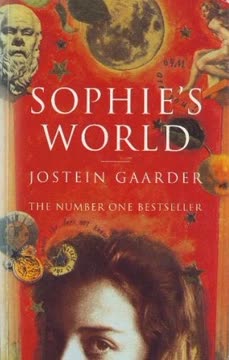


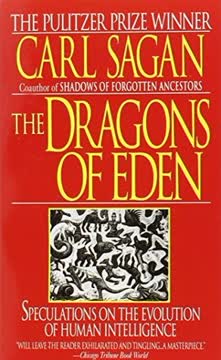
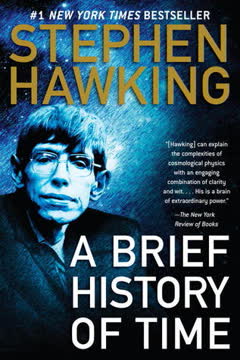
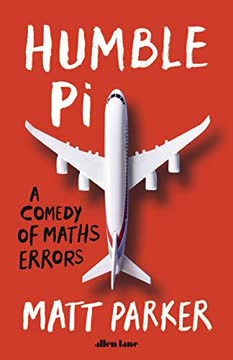

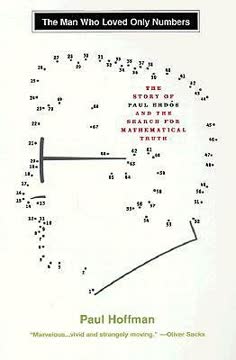
Download PDF
Download EPUB
.epub digital book format is ideal for reading ebooks on phones, tablets, and e-readers.




